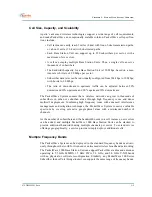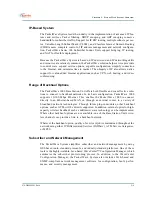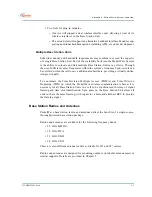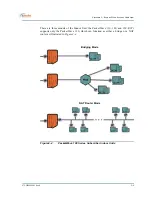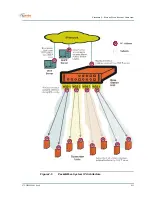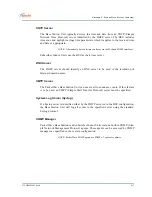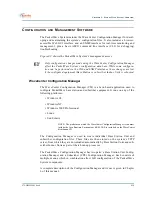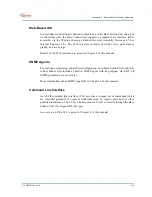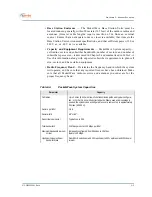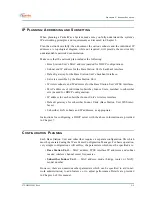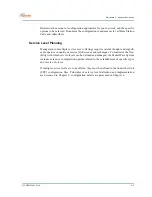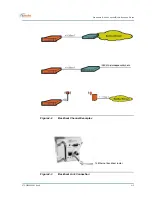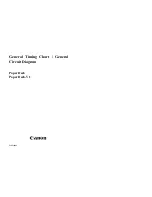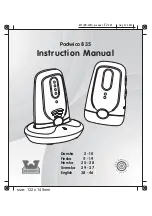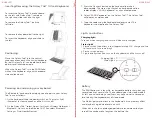
C
H A PTER
2. P
A CK ET
W
A VE
S
Y STEM
O
VER VIEW
2–16
070-20000340-01 Rev A
Servers
Each Base Station Unit requires access to DHCP and TFTP servers to boot up prop-
erly. Access to additional servers is required for the support of specific features.
For additional information about PacketWave System servers, including the configu-
ration of a DHCP server, see Chapter 7.
DHCP Server
The DHCP server assigns IP addresses to all of the PacketWave interfaces except the
Base Station Unit’s wireless interfaces. It also tells each Base Station Unit and sub-
scriber Indoor Unit the name of its configuration file, its default gateway, and the
addresses of other servers. Thus, the DHCP server is critical to the ability of
PacketWave Base Station Units and subscriber Indoor Units to communicate with the
rest of the Internet.
Because DHCP is based on a broadcast request from a client, and the Base
Station Unit is a DHCP client, the DHCP server or a DHCP relay agent must be
located on the same subnet as the Base Station Unit’s backhaul interface.
TFTP Server
For the PacketWave System, the main function of the TFTP server is to store the
system configuration files, and download them on request. Each Base Station Unit and
subscriber Indoor Unit requests its configuration file on hardware or software reboot
(cold or warm start).
Each Base Station Unit and subscriber Indoor Unit stores its configuration in
non-volatile memory. When it reboots, it downloads the latest configuration from
the TFTP server if it is able to, and then makes any changes to its configuration
based on a comparison of the downloaded configuration with the stored configu-
ration. If the device cannot successfully download its configuration from the
TFTP server, it operates with its stored configuration.
The TFTP server is also used to distribute software updates to Base Station Units and
subscriber Indoor Units as follows:
• The new software file is placed on the TFTP server.
• The configuration file for each unit to be downloaded is modified to specify the
new software, and then re-saved on the TFTP server.
• Each unit to be downloaded is rebooted. During reboot, a unit gets its new con-
figuration file, learns that a new software file is specified, and downloads the
software from the TFTP server.


